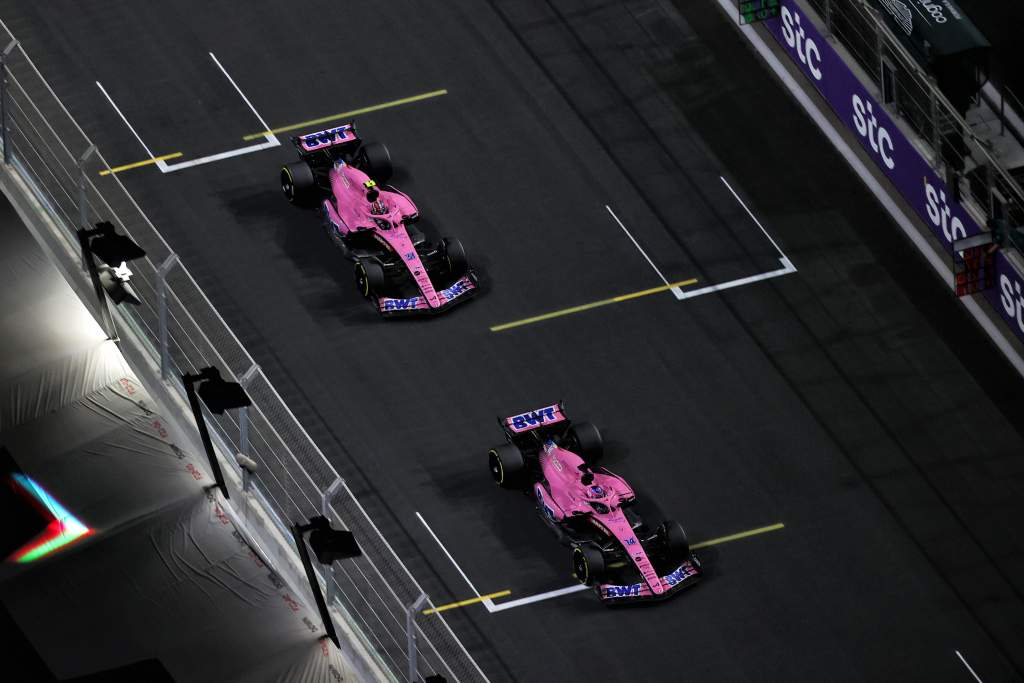Up Next

Formula 1’s new rules have created a “completely different philosophy” of racing more akin to karting, reckons Alpine driver Esteban Ocon.
Sweeping changes were made to F1’s technical regulations for 2022 with an emphasis on making it easier for cars to follow and improving the quality of racing.
Ocon had a fierce fight with Alpine team-mate Fernando Alonso in the Saudi Arabian Grand Prix and also battled the McLaren of Lando Norris and Alfa Romeo of Valtteri Bottas.
“It was a lot of fun,” said Ocon. “Good racing with Lando, Fernando, Valtteri.
“It’s a completely different philosophy now. Racing with these cars is pretty much like a go-kart race, so it’s good fun.”
Elaborating on that point, Ocon said: “Before, basically, as soon as we had a chance we had to go for it because you might only have one chance.
“Now you have two or three chances in the lap to overtake so you need to time it right.
“You need to make the gap at the right time and you know that if you don’t make the gap to the cars behind they are gonna have DRS and get you back.
“So yeah, it’s a different philosophy to racing, more like the go-kart days. It’s good.”
There is clearly initial optimism about the success of the new rules, which have changed the aerodynamic characteristics of the cars and are designed to create a kinder wake so the chasing car is running in less turbulent air.
At the same time, more aerodynamic performance is produced from the underfloor, so the cars should also be less sensitive to running in so-called dirty air.
“We could follow much closer here than last year which is good news,” said Norris in Jeddah.
“It’s also bad news because like with Esteban, I got ahead but it’s much easier for them to then keep up and have a go at you the next lap and you see maybe more backwards and forwards!
“I think you saw that with Max [Verstappen] and Charles [Leclerc] as well. It is fun and definitely makes for a more exciting race to look forward to.”
As Norris alluded to, Verstappen and Leclerc had their own battle in Saudi Arabia, where they swapped positions multiple times in the fight for victory.
Leclerc said: “It is definitely a step forward compared to last year in terms of following.
“The balance of the car is much more predictable, compared to last year’s car where it was very difficult to understand whether you will lose the front, or the rear being behind.
“This helps us to have the confidence to actually push behind someone and to be a bit closer.
“So, it is a step forward but there are other things that we can probably look out for in the future to make it even better.”
Verstappen’s Red Bull team boss Christian Horner added: “The really encouraging thing about these regulations is that in the last two races we’ve seen Charles and Max pass each other about 10 times, which we haven’t seen in previous seasons.
“It’s been great racing. From a sample of two, you’d have to say it’s a big tick in the box for the ability to follow closely and race wheel to wheel.
“It’s been outstanding.”
The new rules are not the only reason F1 has had close racing to start the season, though.
Even though the regulatory overhaul was designed to make racing better, F1 kept the DRS overtaking as a sort of safety net.

So, the drag reduction system, the layout of the tracks and the positioning of consecutive DRS zones have been key to both Bahrain and Saudi Arabia producing good races.
And these tracks have held exciting grands prix before, too. So Ocon’s Alpine team-mate Alonso is curious to see how the rules play out at tracks where overtaking has historically been trickier.
“I think it was a little bit easier than last year because you can follow closer,” he said.
“I think in Melbourne we have a lot of DRS as well so we could have another interesting race.
“But then we need to wait and go back to normal races – Barcelona, Imola – and really see how easy or difficult it is to overtake. This is a very specific track.”





